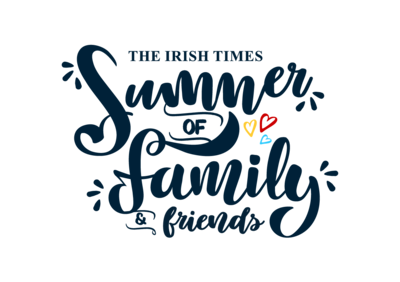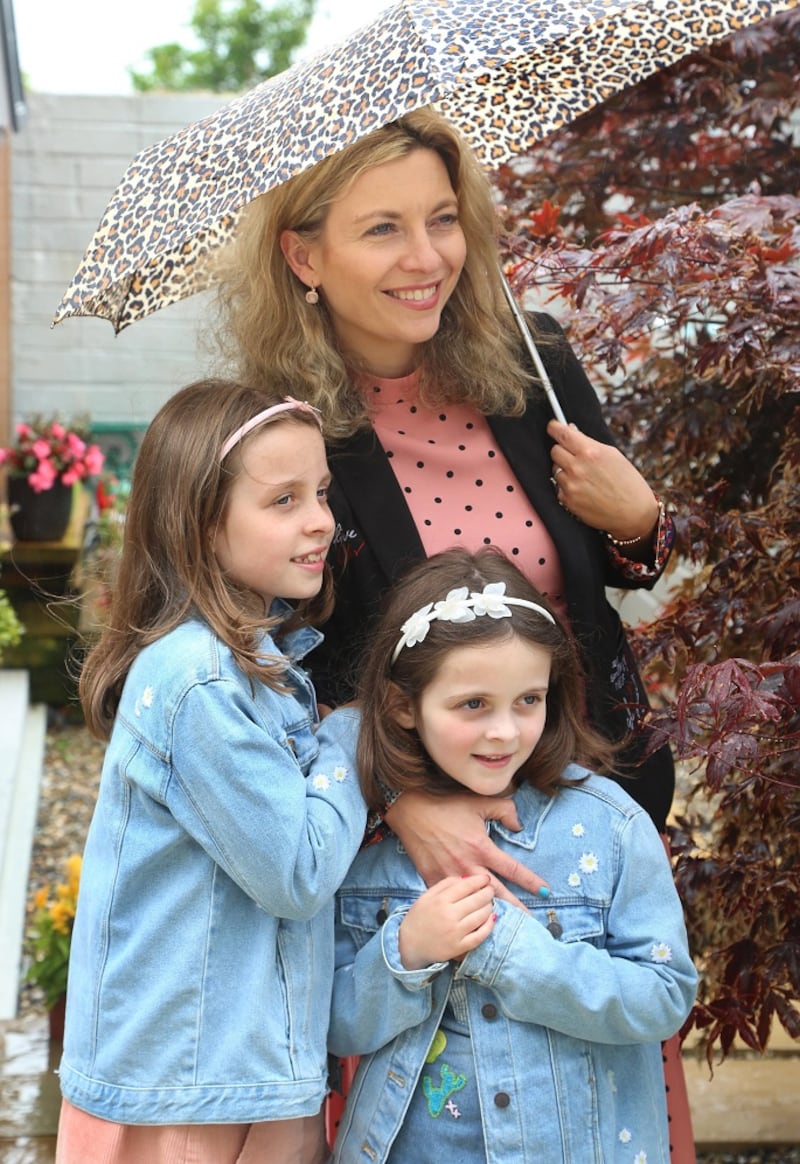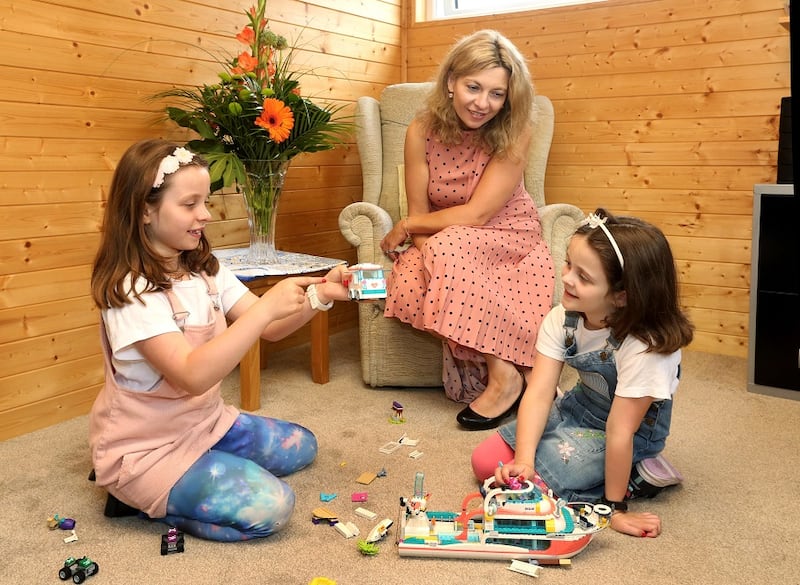Anxiety is both professional and personal for Dr Malie Coyne, a clinical psychologist and self-confessed "little worrier" as a child.

From around the age of eight, she knew there were tensions within the family unit that trailed around the world after her father, a Dutch diplomat, and later ambassador, married to an Irish woman.
“It was just the five of us travelling to all these countries, because you don’t have your cousins, aunties and uncles, and then you are getting to know people all over again.”
She reckons she attended at least nine schools, having started in French education, moving on to the British system and then finishing off her second-level education by doing the International Baccalaureate in South Korea. But it was while she was still of primary-school age that she became aware “all was not okay” at home.
Although she was in her 20s before her parents eventually separated, “things were up and down” throughout her childhood. “I always played the role of the care giver, making sure everybody was okay. When my brother and sister were fighting, I was trying to stop them.” Likewise, when her mother and father were “having communication difficulties”.
As a child, “I felt the weight of the world on my shoulders. I started to feel afraid of going to crowded places; I started getting real stomach aches.”
She was taken to a doctor, who gave her a white powder to take. However, her older brother and sister told her it was a placebo. “You don’t really have stomach pains, that powder doesn’t do anything,” they jibed. “That really upset me,” she recalls. She was feeling the pain, yet was being told it wasn’t there.
Decades later, she has written a book for parents of children like her. Entitled Love In, Love Out – A compassionate approach to parenting your anxious child, it was a “labour of love”.
Anxiety is, of course, a normal feeling, so how does she define an “anxious child”? “When it really starts to interfere in a child’s life,” she replies.
Lots of children have age-related fears and worries, linked to their stage of development, but when they’re not able to enjoy life and social relationships over an extended period, then it’s an issue. However, knowing how to respond to fleeting worries that might resolve by themselves is still important, as you don’t know if they’re going to grow into a bigger problem or not, she points out.
She wants parents to understand that “when your child says there’s a threat and they feel there’s a threat, they feel it in their bodies. It feels real to them.
“So, if you suddenly tell them there is no threat, they feel the threat is actually bigger because the person who could anchor them to safety is not hearing what they have to say. It is quite a lonely place to be.”
Coyne doesn’t blame her parents for her struggles as there wasn’t the same awareness when she was growing up about mental health issues.

“They didn’t know to link my tummy aches and fear of crowded places to my worries about family, school and moving to another country. They didn’t know that; the doctor didn’t ask me. Nowadays things have changed,” she says in an interview from her Galway home, where she lives with her husband Pete Coyne and their daughters Jessica (eight) and six-year-old Aimée.
Having left her parents in Korea to study psychology at Trinity College, Dublin, the combination of meeting Pete, just after she graduated, and the option to train in clinical psychology in his native city of Galway, first brought her there in 2003.
The title of the book comes from the affirmation a fellow mother likes to use in the midst of tough times with her children
Despite the increasing awareness that physical symptoms might be anxiety, she believes parents still struggle with how to react to an anxious child. Is this because behind every anxious child, stands an anxious parent?
Whenever an anxious child come into her Galway office, where she works four days a week in primary care with the HSE, she will always ask the parent if that child reminds them of anyone. It might not be a parent, it might be a grandparent.
“They say about 15 per cent of children are born with a more anxious temperament. So, 15 per cent of parents are also born with an anxious temperament.”
But even if an adult wasn’t anxious at the outset, having a very anxious child can contribute to a parent’s anxiety, which in turn exacerbates the child’s unease. Sometimes it is difficult to see where the cycle of stress begins and ends.
While it may be instinctive to reassure an anxious child that there is no threat and everything is fine, “you are not meeting them where they are at”. When somebody denies your feeling, you don’t feel understood.
Coyne advocates a compassionate approach, which applies both to parent and child. The title of the book comes from the affirmation a fellow mother likes to use in the midst of tough times with her children. It’s about taking a moment to draw breath, acknowledge that parenting is hard and reassure yourself you’re good enough, and then exhale that love out to your children.
“We need to give ourselves a break, so that we can give our kids a break.”
Very familiar with self-criticism, Coyne suffered from anorexia as a teenager and says that “probably sprung from being quite perfectionist and anxious”.
Compassion-focused therapy pays particular attention to how early childhood experiences affect our emotions as adults. Three circles, or systems, work together to control our emotions and the influence each of those has over us varies from time to time, as well as from individual to individual.
In a nutshell those three systems are: Threat – any pressure in your life; Drive – anything that motivates you, and Soothing – what you enjoy doing and makes you feel safe.

Giving a lot of space in Love in, Love Out to look at what is really going on with child anxiety, rather than just focusing on strategies to counter it, is what she believes distinguishes it from other books out there on the topic.
She knows from her clinical work that if she has an anxious parent in front of her, there is no point in going straight into strategies, even though they are invariably impatient to know what to do. Realising what is going on for you, as well as for your child, before you start to address the problem is crucial.
Coyne always wanted to work with children but is in no doubt that having children of her own has made her a better child psychologist. “I felt a bit like a fraud before I had my own kids.” When parents would ask her if she had children herself, she could only respond, “well no, but I have read really good books”, she laughs.
“Ever since I became a parent, I think I realised the relentlessness of it.” Yet along with the challenges comes the opportunity to get to know yourself, she suggests. “I thought my skeletons were pretty much out – I have been to counselling many times.” Yet the births of her daughters, who are quite different in temperament, it had more of an impact on her sense of self than she had anticipated.
“It made me realise there were ways that I was reacting to them that were automatic and were coming from my own childhood. I needed to explore that for myself because there were things I wasn’t too happy about how I was parenting, particularly my second daughter.”
An anxious child needs to be supported in breaking down their worries
Using herself as a case study at one point in the book, she admits to being a bit of a control freak who found the transition to parenthood pretty hard. She recognises that her own “fight-flight-freeze” response goes off without much provocation. Even hearing the brewing of a sibling fight is enough to send her into emotional overdrive.
Taking yourself out of that reactive, non-thinking mode is vital before you try to help your child do the same, to feel safe. Even something as simple as asking a child to rate their anxiety at that moment on a scale of 1 to 10 can do that, she says, because they have to use their reasoning brain to answer that.
Not going along with them in avoidance of what makes them feel anxious is also crucial. While the relief of not having to do something they fear will instantly make them feel better, that lifting of stress will also reinforce their belief that, say, going to a party or boarding the school bus, was a real threat.
An anxious child needs to be supported in breaking down their worries. It’s only after that can step-by-step strategies be used to help them overcome those fears.
One of Coyne’s favourite techniques at the outset is where a parent tries to help the child “unpack” their worries from the jumbled mess. This is beautifully illustrated in a children’s story book “The Huge Bag of Worries”, by Virginia Ironside.
No doubt many adults too can identify with the sense of dread that comes with dragging around a bag of undefined but emotionally troubling fears. It’s when you start looking at exactly what’s in the bag, that thoughts clarify and feelings of threat recede.
We’re living through what has been dubbed the “Age of Anxiety” – and that was long before anybody had heard of the coronavirus. However, the tendency to wear “busyness” as a badge of honour and the ripple effect that has on our children is one aspect of life being re-examined by some after months of lockdown.
In the book there is a fascinating reference to how Kim John Payne, author of Simplicity Parenting, found similar responses to cumulative stress among children he had worked with in refugee camps in south-east Asia and then children attending his private practice in London.
Both groups displayed nervousness, fight-flight-freeze reactions and over-controlling behaviour, the symptoms of which included bed-wetting, nightmares, eating issues, clinginess, lashing out and fear of change. Understandable perhaps from those trying to cope with the physical threat of war, but for the children in London it was the mental “war zone” of time-pressured, over-scheduled daily life that was taking its toll. Too much speed, too much stuff, information overload and too many choices.
Coyne routinely asks parents, teenagers and younger children what they enjoy doing and what brings them soothing, and some just don’t know.

“They are in this threat-rush mode and I think this is something Covid has taught us – all that rushing around, what was that for? Kids need less than we thought they did. They don’t need those millions of activities. Out of boredom comes creativity.”
She acknowledges that at times, being so busy herself in supporting other parents through clinical and voluntary work, and increasing activity in social and mainstream media, as well as lecturing at NUI Galway, there is a danger that her own family life might suffer.
“They’re sick of everything to do with the book,” she admits. But the week we talk, the family is just back from a few days in Westport and a week in Bantry is planned for August.
“I give them short bursts of quality time.” She also acknowledges she’s lucky that her husband, Pete, works from home and is with their daughters a lot.
Clearly passionate about sharing her knowledge and life experience, is there also a risk of her authenticity tipping into giving too much of herself, or is she able to draw boundaries?
“Oh completely – I have so much of a story that I have never said to anybody in the media. If you knew the real s*** behind my life … and stuff that has happened in my life and how I feel about things every day. I think I know the appropriate level of self-disclosure.”
Her aim for the advice and honesty offered in the book is that people will come away from it with a sense of hope, rather than a sense of overwhelm
While she says she would love to share more, her main fear in exposing too much of her life is that it is not her information to disclose. “It pertains to other people and it’s not fair and I am not going to do that.”
On the Elaine show on Virgin Media Television a few months ago, she spoke of an incident in which her daughter and a friend had flooded the bathroom and how she had reacted and how she had had to apologise to her daughter about that reaction.
When she arrived home, she was confronted by her daughter pointing out how “you told everybody I flooded the bathroom”. Her heart sunk and, although her daughter was fine with it, it did make her think about over-sharing as a mother.

Another time she disclosed something about a family member to a TV researcher, while asking that it not be mentioned in the show. She soon learned that was a mistake, when the presenter brought it up halfway through the interview. Thankfully, she says, it was a pre-record so she was able to persuade the producer to cut it out.
Her aim for the advice and honesty offered in the book is that people will come away from it with a sense of hope, rather than a sense of overwhelm.
“It’s not a ‘should be’ book, it’s more a ‘question mark, I wonder’ book.”
Love In, Love Out by Dr Malie Coyne, published by HarperCollins (£14.99), will be out on July 23rd
The ‘SAFE’ way to help an anxious child
Berating ourselves that we’re not doing such a good job as a parent ironically, says Dr Malie Coyne, gets in the way of understanding what an anxious child needs.
While all too familiar with self-blame herself, she says that learning to be kind to ourselves carries huge benefits for parents and children alike.
Coyne uses the acronym SAFE to outline an effective approach in addressing a child’s anxiety:
Self-care: first explore any discomfort that is provoked in you by your child's anxiety and work on calming yourself.
Anchoring: recognise the crucial stabilising role you can play while encouraging gradual exposure to things they fear.
Feeling felt: connect to your child to unpack the messages behind the anxiety, to help them feel understood.
Empowerment: build on your child-parent relationship, from which problem-solving strategies can emerge.



















